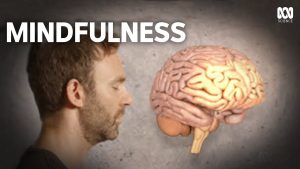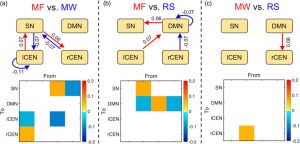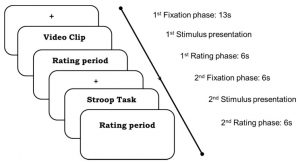Different Meditation Techniques Improve Well-Being Through Different Brain Systems
By John M. de Castro, Ph.D.
‘Meditation can alter the mechanism of your brain after some time.” – Perpetua Neo
There has accumulated a large amount of research demonstrating that meditation practice has significant benefits for psychological, physical, and spiritual wellbeing. One way that meditation practices may produce these benefits is by altering the brain. The nervous system is a dynamic entity, constantly changing and adapting to the environment. It will change size, activity, and connectivity in response to experience. These changes in the brain are called neuroplasticity. Over the last decade neuroscience has been studying the effects of contemplative practices on the brain and has identified neuroplastic changes in widespread areas. In other words, meditation practice appears to mold and change the brain structures and connectivity, producing psychological, physical, and spiritual benefits, especially mindfulness.
There are, however, a wide variety of meditation practices and there has been extensive research into the impact of these different practices on the brain psychological well-being. The different practices can be classified as to whether they focus on present centered awareness (attention to present moment sensation and perception), meta-awareness (attention to consciousness), or non-reactive self-related processing (nonjudgmental attention to and acceptance of self-related perceptions). There is a need to summarize what has been learned about the psychological effects and brain activities related to these different meditation classifications.
In today’s Research News article “Classification of Mindfulness Meditation and Its Impact on Neural Measures in the Clinical Population.” (See summary below or view the full text of the study at: https://www.frontiersin.org/articles/10.3389/fpsyg.2022.891004/full?utm_source=F-AAE&utm_medium=EMLF&utm_campaign=MRK_1885330_a0P58000000G0YfEAK_Psycho_20220614_arts_A ) Ngan and colleagues reviewed and summarized the published research literature on the effects of meditation techniques focusing on present moment attention, meta-awareness, or non-reactive self-related processing on brain systems and psychological well-being. They found 12 published research studies.
They report that the published research studies found that meditation focusing on present centered awareness was associated with neural activity in the brain’s salience network that is associated with identifying important aspects of the environment to pay attention to. They also found that meditation focusing on meta-awareness was associated with neural activity in the brain’s default mode network that is associated with self-related processing and mind wandering. Finally, they found that meditation focusing on meta-awareness was associated with neural activity in the brain’s default mode network interconnections with the executive network that is associated with high level thinking.
So, although all meditation focuses produce beneficial psychological effects, they may do so through different neural mechanisms.
“it really matters what you practice—the observed brain changes were specific to different types of training and coincided with improvements in emotional and cognitive skills.” – Tania Singer
CMCS – Center for Mindfulness and Contemplative Studies
This and other Contemplative Studies posts are also available on Twitter @MindfulResearch
Study Summary
Ngan STJ and Cheng PWC (2022) Classification of Mindfulness Meditation and Its Impact on Neural Measures in the Clinical Population. Front. Psychol. 13:891004. doi: 10.3389/fpsyg.2022.891004
Different forms of mindfulness meditation are increasingly integrated in the clinical practice in the last three decades. Previous studies have identified changes in the neurophysiology and neurochemistry of the brain resulting from different mindfulness meditation practices in the general population. However, research on neural correlates of different types of meditation, particularly on the clinical outcomes, is still very sparse. Therefore, the aim of this article is to review the neural impact of mindfulness meditation interventions on different mental disorders via the classification of main components of mindfulness meditation. The clearer classification of mindfulness meditation may inform future clinical practice and research directions.









